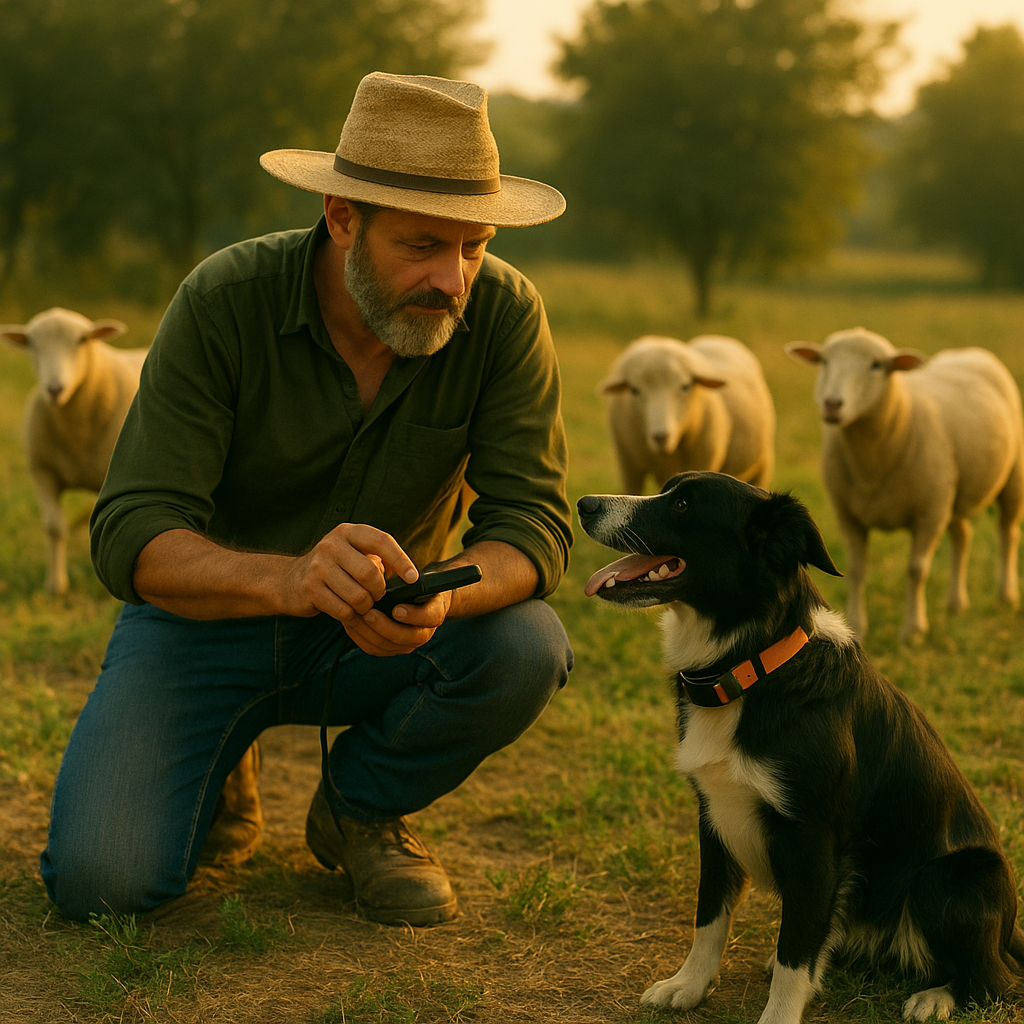
Why Electric Collars Aren’t Cruel—And Can Actually Be Kind
When people hear about training dogs with a “electric dog collar,” the first reaction is often concern. But training farm dogs with an electric collar is becoming more common as farmers look for reliable ways to communicate over long distances managing livestock. Town people or people that haven’t got dogs may sometimes picture something harsh or inhumane—but that couldn’t be further from the truth when used properly. On a working farm, electric collars (also called e-collars) are not punishment devices—they’re communication tools. And for a farm dog learning the ropes around livestock and wide-open land, they can be life-changing.
Let’s walk through how they work, why they’re helpful, and how they protect both dogs and the animals they’re working with.
How training farm dogs with an electric collar helps on the farm.
When used by experienced handlers or responsible farmers, the goal is never to scare or hurt the dog—it’s to get their focus at a distance or in high-distraction environments.
The Challenges of Training a Farm Dog
Farm dogs aren’t just pets. They’re part of the team. They help manage sheep, cattle, or poultry, and they need to make fast decisions, often far away from the farmer. But early on, young dogs can easily get distracted—by livestock, smells, or even a kangaroo hopping past (if you’re in the Aussie bush!).
Yelling or chasing after them doesn’t work. That’s where an e-collar becomes a clear, consistent way to reinforce commands at a distance—especially when a dog’s safety (or that of the livestock) is on the line.
Real-Life Example: Calling Off a Chase
Let’s say a young heading dog is learning to work sheep. She’s keen, but sometimes she pushes too hard, causing stress or scattering the flock. One buzz of the collar—paired with a known voice command—can instantly break her focus and bring her back.
It’s not about punishment. It’s about clarity: “Hey girl, slow down. You’re too close.” That moment of correction means the difference between a good training day and a paddock full of panicked sheep.
Safety First—for Everyone
Farmers care deeply about their animals, both the four-legged workers and the livestock they tend. E-collars are often used alongside positive reinforcement, voice commands, and rewards—they’re one part of a thoughtful training system.
Plus, on a large property where dogs roam out of sight, a collar can help prevent injury or accidents. A dog chasing a motorbike, wandering into a bull paddock, or ignoring a recall can face serious danger. A well-timed cue can save a life.
Aren’t There Better Ways?
Some city folks might say, “Why not just use treats or clickers?” And we do—when it works. But farm work isn’t a dog park. The environment is unpredictable. When used properly, training farm dogs with an electric collar builds trust between farmer and dog. The collar acts like a tap on the shoulder ,not a punishment when your dog is 200 meters away and zoned in on a mob of sheep.
Used properly, they make training faster, clearer, and more humane than yelling or physically intervening.
Final Thoughts
Electric collars aren’t cruel—they’re kind when used responsibly. They build trust, keep dogs safe, and help them become reliable workers in a high-stakes environment. For city folks wondering why farmers use them, the answer is simple:
They care.
They care enough to train their dogs well, communicate clearly, and ensure everyone—human, dog, and animal—is safe on the land.
